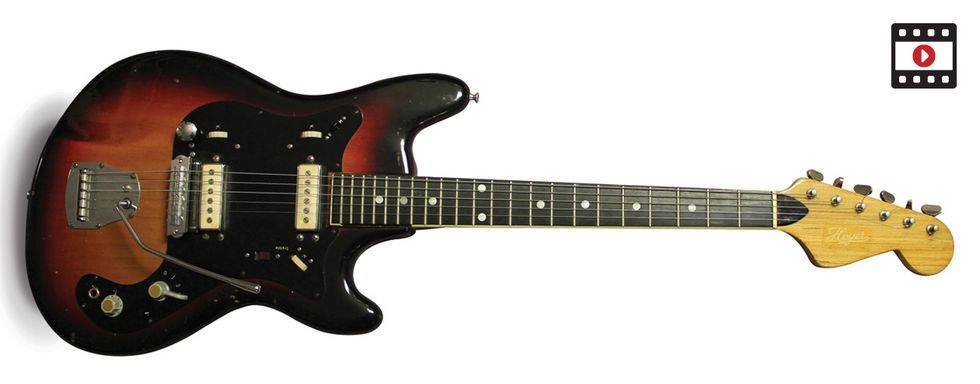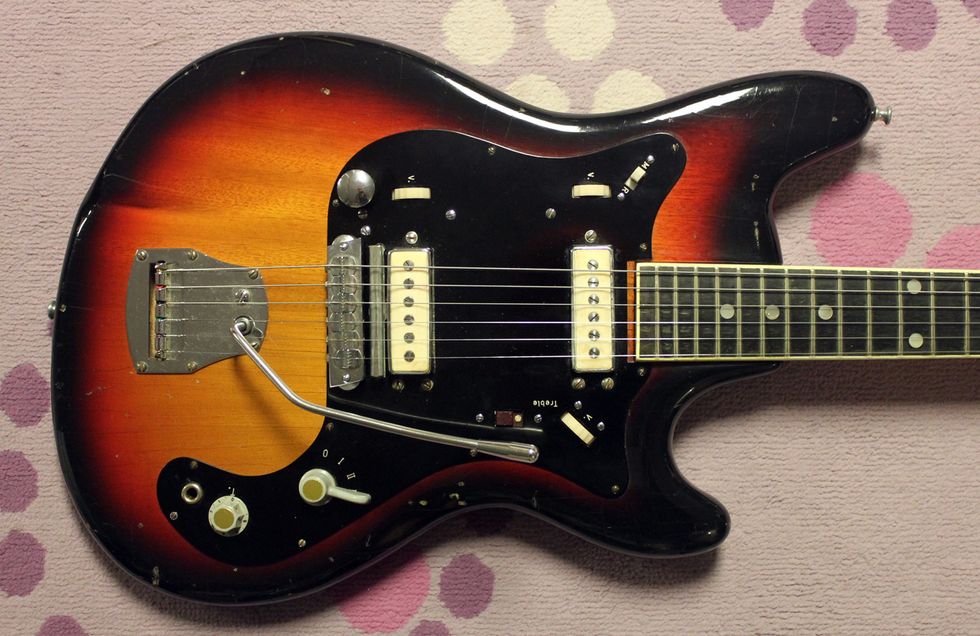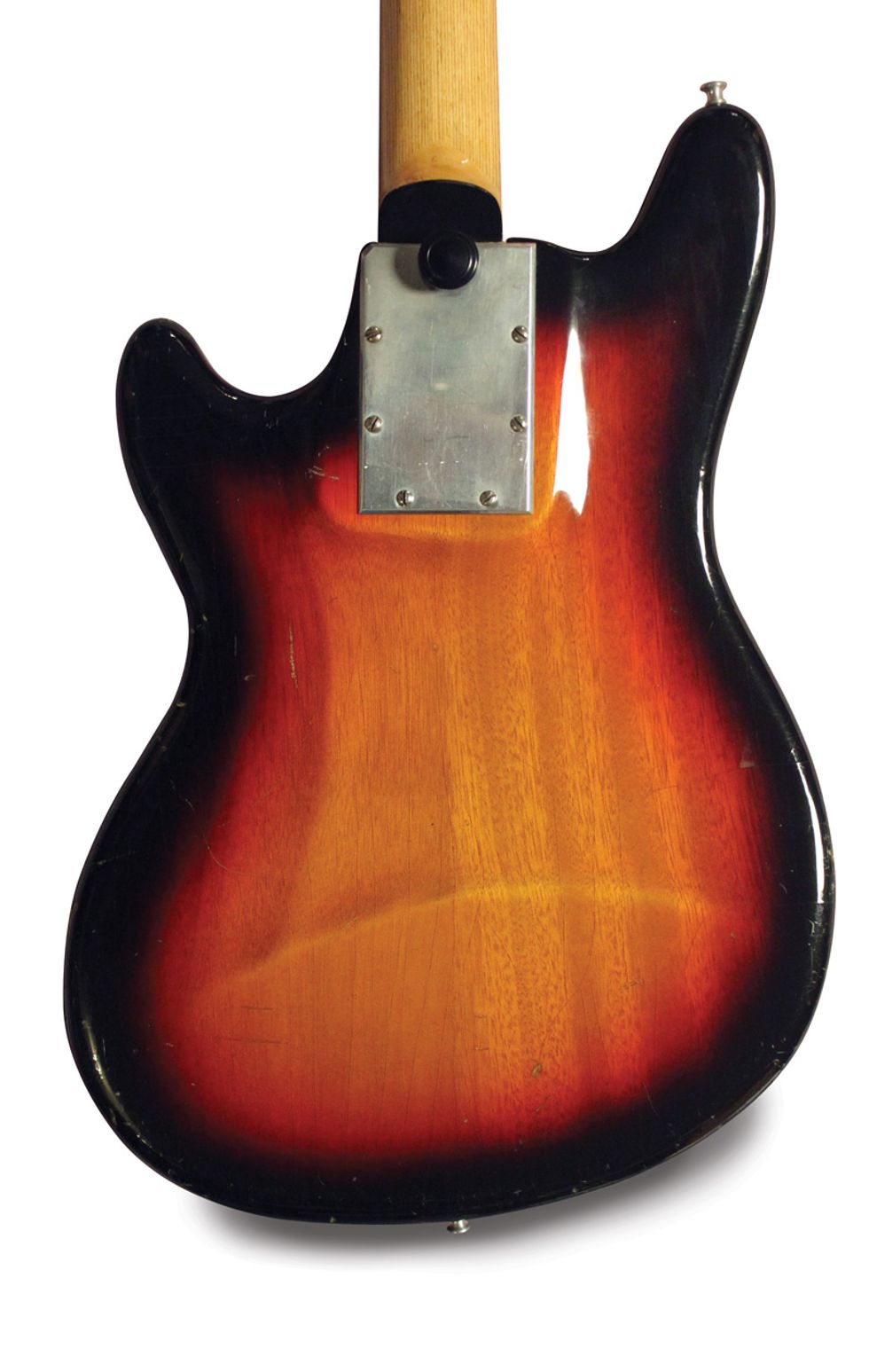Way back when I first discovered I had a passion for guitars, I also realized I was drawn to instruments that were weird and different. I’m not exactly sure why, but I didn’t want to play a guitar everyone else had and I also didn’t want to play new ones. I was attracted to the obscure, the wild, and the odd!
Back in the late ’80s, it was difficult to connect with like-minded folks. There were a few guys lurking in the classified sections of old guitar magazines (Remember those?), but, other than that, I felt like I was on an island of misfit-guitar fandom. One of the first people I connected with back in the day was Scott Freilich, who owned Top Shelf Music in Buffalo, New York, for many years.
We first met when I called him about some Valco pickups he had for sale. I quickly came to know Scott as a great music historian, writer, guitar tech, and fellow lover and collector of bizarre guitars, and we ended up striking up a good friendship over the years. Scott had some rather incredible photos of the oddball, rare, and expensive guitars that had passed through his shop, before they were really well-known commodities. For instance, he had some incredible Wandre guitars, which are now like owning a piece of fine art if you have one. He was also really into Valco guitars—Airline, Supro, and National—which is how Scott and I really connected.
Scott would talk about guitars in a way that spoke to me about equality. He didn’t hold a ’59 Les Paul in any more esteem than he did a blue-collar Silvertone. Since he had seen it all and worked on it all, Scott wasn’t really blown away by anything in the guitar universe. I really liked that about him. He was selfless and helped me tremendously with research. Heck, I got to befriend fellow guitar nuts from all around the world because of Scott. He was a regular at the big guitar shows and it was a real sight to see how he would work the Philly Guitar Show, in particular. He knew everyone and he introduced me into a nice little club of folks I still consider friends to this day.
Scott passed away earlier this year, so I wanted to honor him here in my column. There are so many stories to share and so many guitars to talk about, but I’d like to talk about the first guitar Scott ever repaired for me. Only the true wrecks got sent to him, because he could literally resurrect any guitar.
Photo 2
This 1965 Hoyer 725 (Photo 1) was a real basket case when I had purchased it. The neck binding was gone on both sides, and the neck was severely bowed and twisted. Like most early electric guitars made in Germany, the electronics were overly complicated (Photo 2) and, in this case, simply not working. Scott fixed it all without too much fuss.
The Hoyer company has been around for well over 100 years and has enjoyed a rather good reputation as a guitar maker. Located in Germany, Hoyer introduced some interesting electric guitars back in the day, and among them was the very strange 725. Rather than a traditional 4-bolt setup, this guitar had a huge hand screw at the neck joint (Photo 3). It seems Hoyer was simply going for an easy approach to removing the neck. You could actually pull it off with just a few twists of the big screw!
Photo 3
The 725’s body was sculpted in an interesting way, like a gentle topography that curves around your hip. The guitar also has a bridge mute that’s operated by turning a knob to raise and lower it. Scott, however, removed the rubber from the mute and added a piece of steel to give the guitar an intentional sitar-like buzz when set at the right level.
In 1965, the Hoyer 725 sold in the U.S. for a whopping $275 and—you may have guessed it—never sold well. Hoyer would later expand on the whole “travel guitar” idea to make neck removal easy, but this early Hoyer electric was anything but easy when it came to repair.
Folks, finding good guitar techs who understand quirky guitars is like finding a good mechanic who understands how to tune a carburetor. They’re hard to find, just like good friends or fellow lovers of weird guitars. Scott was like that for me, all rolled up into one.
See and hear this 1965 Hoyer 725 demoed by Mike Dugan.













![Rig Rundown: Russian Circles’ Mike Sullivan [2025]](https://www.premierguitar.com/media-library/youtube.jpg?id=62303631&width=1245&height=700&quality=70&coordinates=0%2C0%2C0%2C0)



![Rig Rundown: AFI [2025]](https://www.premierguitar.com/media-library/youtube.jpg?id=62064741&width=1245&height=700&quality=70&coordinates=0%2C0%2C0%2C0)



